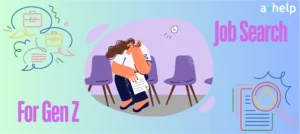In a bid to retain young, skilled talent amidst a demographic winter, states like Vermont and Maine are pioneering a novel approach: paying off student loans of college graduates who commit to staying and working within their borders. The initiative, which offers up to $5,000 a year towards student loan repayments, aims to not only keep the youth from migrating to other states but also to invigorate the local economies and communities, according to The Hechinger Report. As the nation grapples with an aging population and a mismatch between labor supply and demand, this innovative program may become a potential model for other states to emulate.

✅ AI Essay Writer ✅ AI Detector ✅ Plagchecker ✅ Paraphraser
✅ Summarizer ✅ Citation Generator
Key Takeaways:
- Aging states grapple with a shortage of young, skilled workers, threatening economic growth and sustainability.
- States like Vermont and Maine have initiated programs offering financial incentives, such as student loan repayments, to retain college graduates.
- While some graduates are enticed by the financial relief, others question whether the incentives are substantial enough to alter long-term life decisions.
- The success of these programs could inspire other states to adopt similar strategies, reshaping nationwide approaches to demographic and economic challenges.
Aging states face a distinct set of challenges, primarily revolving around demographic shifts that see a larger proportion of the population entering retirement while the workforce dwindles in size. This demographic transition poses substantial economic and social challenges. As the working-age population shrinks and the elderly population expands, there is a real strain on social security systems, healthcare services, and the overall economy. The reduced workforce implies fewer individuals contributing to tax revenues and social security systems, while simultaneously, there is an increased demand for healthcare and retirement benefits. Furthermore, aging states often experience a talent drain as young professionals seek opportunities in regions with more vibrant, youthful demographics.

This scenario leaves a vacuum in critical industries and professions, hindering economic growth and stability and propelling states into a cycle of stagnation that can be challenging to reverse.
At the same time, young professionals that aging areas are so desperate to attract also have major problems to deal with.
Student loan debt is a pervasive issue in the United States, with numerous graduates entering the workforce already burdened by significant financial obligations. The impact of this debt is wide-ranging, affecting not only the individual borrowers but also the broader economy. It hinders young professionals from making pivotal life and financial decisions, such as purchasing homes or starting families.
Consequently, innovative solutions like loan repayment programs become crucial, not merely as talent attraction strategies but as essential mechanisms to rejuvenate and sustain the demographic and economic vitality of aging states.
Jamie Kohn, senior research director for the Gartner consulting firm’s human resources practice, describes the competition for college graduates as fierce:
“Generally, there is a massive shortage of talent, particularly in certain skilled talent areas. Student loan repayment may be a way for states to mitigate some of the loss of wage growth that people are feeling so they not only stay but can afford to start families and buy houses.”
Arielle Kuperberg, an associate professor of sociology at the University of North Carolina at Greensboro, stated,
“From the states’ perspective, if they want people in the state to stay and have kids, reducing debt is going to help people make that decision.”
After 2018, a minimum of 42 states have implemented student loan repayment or forgiveness programs, as per the National Conference of State Legislatures. The vast majority of these programs are designated for professionals in areas experiencing shortages, predominantly in the fields of teaching and healthcare, or for those who commit to working in underserved regions.
| State | Profession | Requirement | Loan Repayment/Forgiveness Amount |
| Utah | Doctors, Dentists, Pharmacists | 3+ years in underserved areas | Up to $75,000 |
| South Carolina | Teachers | N/A | Up to $5,000/year |
| Illinois | School Social Workers | N/A | Not specified |
| Colorado | Veterinarians | Work in specified areas (also applicable to AZ, IA, MN, OH, UT) | Up to $90,000 |
| Arkansas | Pathologists | Work in the state crime laboratory | Up to $100,000 |
| North Dakota | Various Professions | Graduates from eligible institutions in high-demand occupations | Not specified |
| New York | N/A | Graduates from NY schools, specific loan types, below a certain income | Relief for up to 2 years |
Vermont and Maine, however, have initiated student loan repayment assistance for recent college graduates from all fields of study who commit to remain and work in the state, with minimal conditions applied.
Vermont and Maine’s Successful Strategy
Aging states, notably Maine and Vermont, are confronting a demographic and economic difficulty intensifying competition for young, skilled workers. With the median age soaring and educational institutions closing or merging due to declining enrollments, these states are witnessing a tangible contraction in their youthful population and, consequently, their labor markets. Maine, which has the nation’s oldest population by median age, and Vermont, ranking third, are experiencing a cascade of challenges from labor shortages to slower economic growth and declining state tax revenues. The situation is worsened by the early retirements triggered during and post the COVID-19 pandemic. Businesses cite the availability of professional and skilled technical workers as a paramount concern.
Nate Wildes, Executive Director of Live + Work in Maine, underscores the national resonance of this issue, stating,
“If you look at America writ large, our economy is growing in ways our talent pipeline isn’t keeping up with.”
The mismatch between labor supply and demand is not isolated to these states but reflects a broader national trend. Maine has projected a need for an additional 75,000 workers by 2029, a demand that starkly contrasts with the current labor market dynamics. Wildes foresees the spread of innovative solutions, noting,
“A lot of other states are figuring this out. We get a lot of phone calls from governors’ offices and legislators asking for feedback and insight about how the policy is working.”
In a bid to mitigate these challenges, states have initiated programs like Maine’s Student Loan Repayment Tax Credit and Vermont’s Green Mountain Job & Retention Program, aimed at retaining graduates and young professionals. State Sen. Matthew Pouliot, who sponsored Maine’s initiative, candidly remarked, “We’re facing a demographic winter.” He acknowledges that while the tax credit is not a panacea, “it is a chance to come and see the long-term benefit of staying.” In Vermont, the program, which repays up to $5,000 a year of student loans for new graduates who commit to working in the state for at least two years, has seen 212 applications, with 95 approved, signaling a positive, albeit modest, response.
Patrick Walsh, an associate professor of economics at Vermont’s Saint Michael’s College, provides a nuanced perspective, stating,
“When I looked at the numbers, I was actually surprised at how effective it actually might be.”
He emphasizes that in the context of Vermont’s net migration, an additional 400 people per year is “actually kind of meaningful.” These programs, while in their infancy, represent a strategic approach to addressing the demographic and economic challenges of aging states, intertwining economic incentives with strategies to revitalize and sustain their labor markets and communities.
Follow us on Reddit for more insights and updates.





Comments (0)
Welcome to A*Help comments!
We’re all about debate and discussion at A*Help.
We value the diverse opinions of users, so you may find points of view that you don’t agree with. And that’s cool. However, there are certain things we’re not OK with: attempts to manipulate our data in any way, for example, or the posting of discriminative, offensive, hateful, or disparaging material.